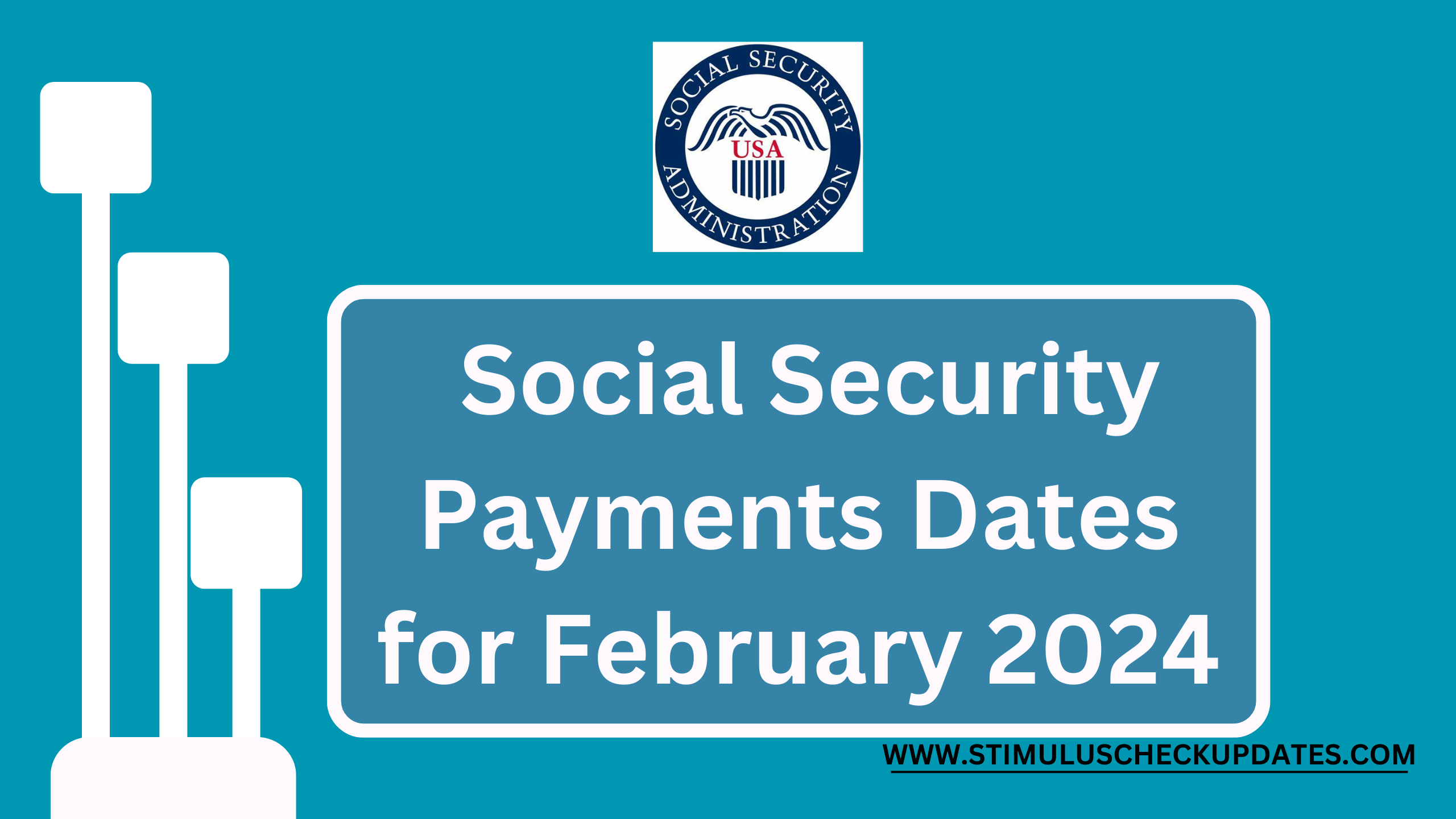Curious about when you’ll receive your February 2024 Social Security Payments? Understanding these dates is crucial for planning your finances. Millions rely on these benefits, making it essential to know when they’ll arrive. Social Security supports retirees, those with disabilities, and survivors. The payment dates vary based on birthdates and other factors. Clear knowledge of these dates ensures you’re prepared. Let’s delve into the specifics of when you can expect your benefits for February 2024.
Social Security payment dates February 2024- an overview
| Topic | Key Details |
| Importance of Social Security Benefits | Millions rely on benefits for financial support. Provides guaranteed income for expenses like food, housing, and healthcare. |
| Social Security Programs | OASDI (Old Age, Survivors, Disability Insurance) provides benefits based on lifetime earnings/contributions. SSI (Supplemental Security Income) offers additional means-tested support. |
| Payment Distribution | Benefits are distributed monthly but payment dates vary based on factors like birthdate, application date, and type of benefits. The majority receive payments on 2nd, 3rd, or 4th Wednesdays. |
| Payment Schedule | Specific payment dates are outlined for February 2024 as an example. Aims to spread out disbursements while ensuring timely support. |
| Knowing Payment Dates | Understanding schedules is important for beneficiaries to budget/plan finances. Unexpected changes could negatively impact those relying on benefits as a primary income source. |
| Importance of Predictable Payments | Ensuring efficient, predictable distribution is a top priority as benefits constitute major public expenditure and economic support for millions. |
| Official Website | Additional information is available on the Social Security Administration website: www.ssa.gov |
Importance of Social Security Benefits
Millions of Americans rely on Social Security benefits for financial support. These benefits are crucial for retirees, individuals with disabilities, and survivors of deceased claimants. Social Security provides a guaranteed income stream that many depend on to pay for basic living expenses like food, housing, and healthcare. For some, it represents the majority of their retirement income. Ensuring these payments are received reliably each month is therefore extremely important.
Social Security Programs
The Old Age, Survivors, and Disability Insurance (OASDI) program is the primary Social Security program providing financial assistance to eligible individuals. It aims to replace a portion of lost income due to factors like old age, disability, or the loss of financial support from a deceased spouse or parent. Eligibility and benefit amounts are based on a recipient’s lifetime earnings history and contributions to the Social Security system through payroll taxes while working. Those who have worked longer and earned more over their career will generally receive higher monthly OASDI benefits in retirement or if disabled.
Supplemental Security Income (SSI) is a separate program that offers additional means-tested support to elderly, blind, and disabled individuals with limited income and assets. Unlike OASDI, SSI benefits are not based on work history or Social Security taxes paid. Rather, eligibility and payment amounts are considered financial needs. SSI payments help bridge the gap for retirees and disabled individuals whose OASDI benefits alone may not adequately cover their basic living costs. Both programs together provide a safety net for millions of vulnerable Americans each month.
Payment Distribution
Both the OASDI and SSI programs distribute benefit payments monthly. However, the actual amounts received by individuals can vary significantly based on factors like past earnings and work history for OASDI or current income/assets for SSI. Recipients also are not paid on the same calendar day each month. Rather, Social Security payment dates depend on a variety of factors including the type of benefits, when an application was filed, and the birthdate of the recipient. Understanding these nuances can help beneficiaries better plan their monthly finances.
The majority of Social Security recipients receive their payments on either the second, third, or fourth Wednesday of each month based on the last two digits of their Social Security number. For example, in February 2024:
- February 1: SSI recipients as well as Social Security beneficiaries who signed up before 1997 and receive payments through a foreign bank will be paid.
- February 14: Individuals with a birthdate between the 1st and 10th of any month will receive their payment on this date.
- February 21: Payments will be distributed to those born between the 11th and 20th.
- February 28: The last group with birthdays falling between the 21st and last day of the month will be paid on this date.
This monthly payment schedule aims to spread out disbursements and reduce administrative burdens while still ensuring all recipients receive support on time. Special payment dates also apply in certain situations like when the regular date falls on a weekend or holiday.
Knowing When to Expect Payments
Understanding the nuances of Social Security payment dates is important for both beneficiaries and their families to properly budget and plan finances from month to month. Unexpected delays or changes in payment schedules can negatively impact those who rely on these benefits as their primary or only source of income. Advanced awareness of deposit dates empowers recipients to proactively monitor payments and address any issues that could disrupt the receipt of their guaranteed support.
Social Security serves as a crucial lifeline for millions of retired, disabled, and low-income Americans every month. The programs together constitute a major public expenditure and economic pillar. Ensuring efficient, predictable distribution of benefits is, therefore, a top priority. Knowledge of payment details like distribution schedules and dates equips recipients to confidently manage their resources and maintain financial stability through this important income source.
Bottom Line
understanding the intricacies of Social Security payment dates is vital for recipients and their families to effectively plan their finances. With the potential for unexpected delays or changes in payment schedules, having advanced awareness of deposit dates enables beneficiaries to proactively manage their finances and address any issues that may arise. As a critical lifeline for millions of retired, disabled, and low-income Americans, the efficient and predictable distribution of Social Security benefits is paramount. By staying informed about payment details and schedules, recipients can confidently navigate their financial resources and maintain stability through this essential income source.
FAQs
How are OASDI and SSI programs different?
OASDI provides financial assistance based on work history and contributions to Social Security, benefiting retirees and those with disabilities. SSI, on the other hand, offers means-tested support based on financial needs, assisting elderly, blind, and disabled individuals.
Why do Social Security payment dates vary?
Payment dates depend on factors like benefit type, application filing date, and recipient's birthdate. Most recipients receive payments on the second, third, or fourth Wednesday of the month, ensuring a spread-out disbursement while accommodating holidays and weekends.
Why is it crucial to know Social Security payment details?
Understanding payment nuances is essential for effective budgeting and financial planning. Advanced awareness of deposit dates empowers recipients to monitor payments, proactively address issues, and ensure a reliable income source, especially as Social Security serves as a lifeline for millions of Americans.


Yes! Finally someone writes about website.